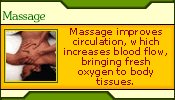|
In conventional medicine, the symptoms are considered to be a manifestation
of the disease. The drugs are given to kill the bacteria causing
it or to dampen the symptom of the condition. Homeopaths, on the
other hand, see the symptoms as the body's attempt to heal itself.
They see the symptom as a positive sign that the body's defense
mechanism is trying to fight the underlying cause and by this reasoning,
they insist that the symptoms should not be suppressed as we are
working against the body's attempt to cure it.
|
Homeopathic Medicine vs.
Conventional Medicine |
|
Homeopathic
Medicine |
Conventional
Medicine |
| Illness
|
| Is an individual expression of
imbalance and has important meaning |
Occurs in well-defined groups based
on pathology, and meaning of illness is irrelevant |
| Symptoms
|
| Are evidence of disharmony and
the person's attempt to restore order |
Are bad |
| Are analyzed to follow progress
of treatment |
Successful treatment makes them
go away |
| Diagnosis
|
| The understanding of the phenomenon
of the illness |
The search for the structural cause
|
| The whole person is taken into
account |
|
| Treatment
|
| Individualized and based on the
entire expression of symptoms |
Based on the pathologic diagnosis
|
| Self-care (what the client does)
is emphasized |
What the doctor does is emphasized
|
| Based on like cures like and potentized
microdoses of medicines |
Based on opposing and suppressing
symptoms, and high doses of medicine |
The laws of homeopathy are the law of similars, the principle of
minimum dose and prescription for the individual.
The Law of Similars
The principle that like shall be cured by like, or Similia similibus
curantur. This principle, recognized by physicians and philosophers
since ancient times, became the basis of Hahnemann's formulation
of the homeopathic doctrine: the proper remedy for a patient's disease
is that substance that is capable of producing, in a healthy person,
symptoms similar to those from which the patient suffers.
In other words, a substance produces symptoms of illness in a well
person when administered in large doses; if we administer the same
substance in minute quantities, it will cure the disease in a sick
person. Hahnemann suggested that this is because nature will not
allow two similar diseases to exist in the body at the same time.
Thus homeopaths will introduce a similar artificial disease into
the body which will push the original one out. The dose is small
so that there is no danger of any long term side effects.
The Principle of Minimum Dose
This principle states that extreme dilution enhances the curative
properties of a substance, while eliminating any possible side effects.
This is just the reverse of conventional drug philosophy where a
minimum dose is required for effect. Starting from the conventional
dose, as we decrease the concentration (or increase the dilution),
the medicine become less and less efficient. But below a threshold,
the medicine start getting potent again. Homeopaths uses this region
of potency.
Whole Person Prescribing
A homeopath studies the whole person. Characteristics such as their
temperament, personality, emotional and physical responses when
prescribing a remedy, etc. are studied. So, a homeopath may treat
different persons exhibiting the same symptom differently. (For
example, two persons exhibiting flu like symptoms may get two different
medication from the homeopath based on the appraisal of the mind
body constitution.)
Laws of Cure
There are three laws of cure, They are:
- A remedy starts at the top of the body and works downward
- A remedy works from within the body outward, and from major
to minor organs
- Symptoms clear in reverse order of appearance.
Application of the three principles of cure means that you will
feel better emotionally before you will feel better physically.
|


